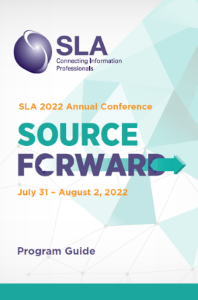Back
For a number of years now, cultural heritage organizations have made vast amounts of digitized material available online. And, for many users of these materials how these materials can be used has not always been made clear, as cultural heritage organizations have provided varying levels of licensing, copyright permissions, and other protocols for the reuse of digital resources. More recently, some cultural heritage organizations have moved towards Open Access for their digital collections – a movement that has come to be known as Open GLAM (Galleries, Libraries, Archives, and Museums).
This presentation will examine how Open GLAM resources can also be adapted adjusted, modified, and altered to be used for a variety of different purposes, and can also be remixed and combined with other material in order to create new resources, such as Open Educational Resources (OER). Archivists, Special Collections Librarian, Curators, and other cultural heritage professionals have often advocated for primary source literacy as a component of information literacy. How primary source literacy factors into the Open GLAM movement, as well as its use in OER, will be explored as part of this presentation. More specifically, this presentation will examine how Open GLAM resources might be reused, remixed, redistributed, while still staying true to the need for context and understanding of their broader context – a key characteristic of primary source literacy. Moreover, this presentation will highlight ethical concerns pertaining to open access for cultural heritage, such as concerns surrounding indigenous cultural heritage, privacy, and other concerns, that have arisen in relation to cultural heritage shared and reused. Considering that many users first encounters with primary source material is in the digital realm, the need for primary source literacy in the digital environment is even more pressing.
On Demand Presentation Only
On Demand Only
45 minute presentation
Session: On Demand Presentations
Intersections of Open GLAM, OER and Information literacy
Saturday, July 30, 2022
8:00 AM EDT
- RG
Roger C. Gillis, MLIS
Digital Archivist
Dalhousie University Libraries/Archives
Halifax, Nova Scotia, Canada
Speaker(s)
For a number of years now, cultural heritage organizations have made vast amounts of digitized material available online. And, for many users of these materials how these materials can be used has not always been made clear, as cultural heritage organizations have provided varying levels of licensing, copyright permissions, and other protocols for the reuse of digital resources. More recently, some cultural heritage organizations have moved towards Open Access for their digital collections – a movement that has come to be known as Open GLAM (Galleries, Libraries, Archives, and Museums).
This presentation will examine how Open GLAM resources can also be adapted adjusted, modified, and altered to be used for a variety of different purposes, and can also be remixed and combined with other material in order to create new resources, such as Open Educational Resources (OER). Archivists, Special Collections Librarian, Curators, and other cultural heritage professionals have often advocated for primary source literacy as a component of information literacy. How primary source literacy factors into the Open GLAM movement, as well as its use in OER, will be explored as part of this presentation. More specifically, this presentation will examine how Open GLAM resources might be reused, remixed, redistributed, while still staying true to the need for context and understanding of their broader context – a key characteristic of primary source literacy. Moreover, this presentation will highlight ethical concerns pertaining to open access for cultural heritage, such as concerns surrounding indigenous cultural heritage, privacy, and other concerns, that have arisen in relation to cultural heritage shared and reused. Considering that many users first encounters with primary source material is in the digital realm, the need for primary source literacy in the digital environment is even more pressing.
Learning Objectives:
- Upon completion, participants will be able to describe the Open GLAM movement and practices and challenges associated with it.
- Upon completion, participants will be able to understand and appreciate the connections between Open Educational Resources (OER) and Open GLAM.
- Upon completion, participants will be able to highlight the connections between primary source literacy related to OER and Open GLAM.

